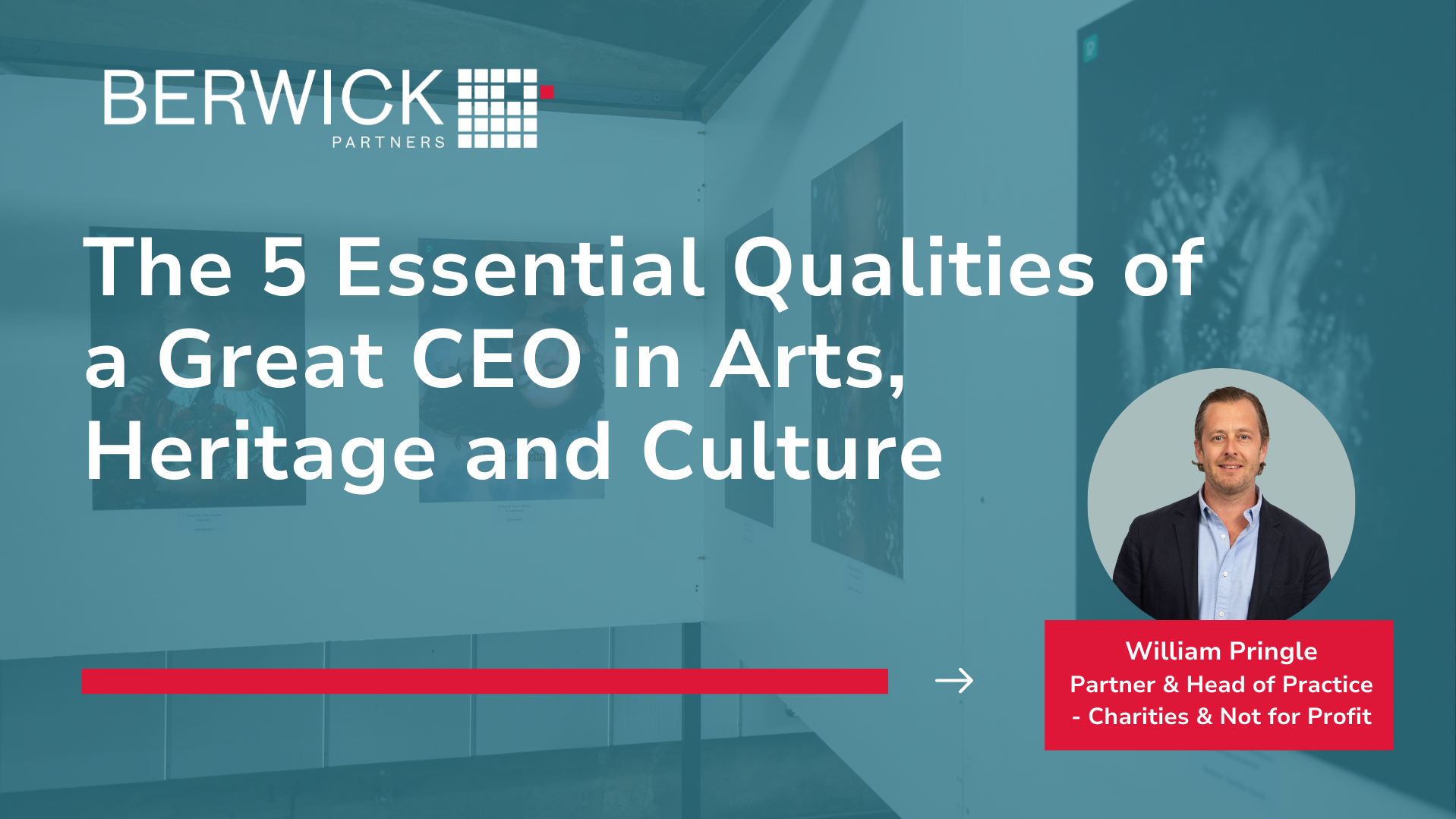The 5 Essential Qualities of a Great CEO in Arts, Heritage, and Culture
In today’s complex and rapidly evolving landscape, the role of a Chief Executive Officer in the arts, heritage, and culture sectors demands more than traditional leadership. It requires a rare blend of strategic vision, commercial acumen, stakeholder sensitivity, and a deep alignment with purpose.
Drawing from years of experience appointing senior leaders into some of the UK’s most iconic cultural institutions, here’s a closer look at what separates the good from the truly great.
- Strategic Leadership with a Human Touch
At the heart of any successful CEO appointment lies the ability to lead with clarity and conviction. In the cultural and not-for-profit sectors, this means more than setting direction, it means inspiring belief. A great CEO must articulate a compelling vision, motivate teams, and develop talent across the organisation. They must be able to lead through others, not just by authority, but by influence and example.
The best CEOs in this space are those who can motivate teams, develop talent, and deliver a vision that feels both ambitious and achievable. They’re not just steering the ship – they’re making sure everyone on board knows where they’re going and why it matters.
- Commercial Acumen in a Purpose-Driven World
The post-Covid environment has reshaped the financial realities of arts and heritage organisations. Visitor numbers have not returned to pre-pandemic levels, public funding has tightened, and operational costs have soared. In this climate, CEOs must bring a strong commercial mindset to the table.
This doesn’t mean abandoning purpose. It means sustaining it. Leaders with experience in retail, hospitality, or other commercial sectors are increasingly being brought into cultural organisations to drive innovation, diversify income streams, and improve operational efficiency.
Take Ruth Blaze, for example. With a background in M&S, Hamleys, and the Co-op, she transitioned into the not-for-profit sector and now leads income growth and marketing at English Heritage. Her commercial pedigree is already proving invaluable in advancing the organisation.
Similarly, Dominic Jones, formerly of Merlin Entertainments, brought his expertise in visitor attractions to the Mary Rose Trust. Since becoming CEO, he has significantly grown visitor numbers and revenue, introducing new experiences like a 4D diving attraction that reimagines how audiences engage with history.
These examples prove quite clearly that commercial savvy and cultural stewardship can, and should, go hand in hand.
- Communication and Stakeholder Engagement
A CEO in this sector must be more than a strategist, they must be a great communicator. They are the public face of the organisation, responsible for building relationships with donors, funders, partners, and the wider community. Whether speaking to government bodies, corporate sponsors, or local audiences, the ability to communicate with authenticity and impact is essential.
Fundraising is a critical part of the role. While supported by development teams, the CEO must often lead from the front – cultivating relationships, securing major gifts, and championing the organisation’s mission in every interaction. Fundraising is a team sport, but the CEO is often the captain. They need to be comfortable in the spotlight, whether that’s at a gala dinner or a boardroom pitch.
- Governance and Board Collaboration
Working effectively with a board is another key requirement. CEOs must navigate governance structures with confidence, ensuring transparency, accountability, and alignment on strategic priorities. The best CEOs understand governance, respect process, and know how to keep things moving without getting bogged down in bureaucracy.
This relationship is foundational to long-term success. It requires political skill, emotional intelligence, and a good sense of timing (and maybe a bit of patience).
- Values-Driven Alignment
Finally, and perhaps most importantly, a great CEO in this space believes in the mission. These roles are not about personal gain – they are about purpose. The best leaders in this space are those who are genuinely motivated by social impact, cultural preservation, and public service.
They choose this path not to get rich, but to make a difference. Whether leading a museum, a theatre, or a national charity, they bring a sense of mission that resonates through every decision they make.
Conclusion
The role of a CEO in arts, heritage, and culture is as demanding as it is rewarding. It calls for a rare combination of strategic insight, commercial skill, emotional intelligence, and deep personal commitment to purpose. As the sector continues to evolve, the leaders who will thrive are those who can bridge the worlds of business and mission – delivering impact not just for their organisations, but for society as a whole.





